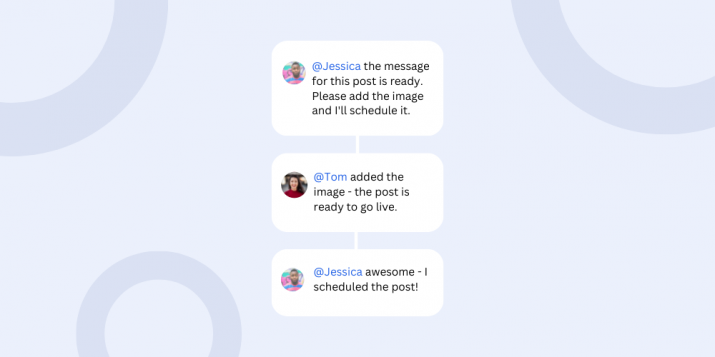
Creating a killer employee advocacy program – best practices
Are you ready to make 2024 the most successful year for your employee advocacy program? Last year, the return of office culture, recession fears, and AI’s rise transformed B2B marketing.
In this fast-paced environment where change is inevitable, leveraging ‘easy wins’ is crucial for engaging your audience and converting leads. This is where employee advocacy comes in. With the combination of the right content, enthusiastic participation from advocates, and a killer strategy, you can easily increase your reach, humanize your brand, and ultimately, turn more of your followers into MQLs.
But where should you focus your efforts? We analyzed key employee advocacy trends from 2023 to help you implement a more effective employee advocacy program in 2024.
The Insights We’ve Uncovered:
- Is LinkedIn still the best network for your employee advocacy program?
- When are advocates posting content?
- How to increase advocate engagement?
- Which content gets the most engagement?
Is LinkedIn still the best network for your employee advocacy program?
Short answer–yes. Your advocates are almost nine times more likely to post on LinkedIn than they are on X (formally Twitter), its closest ‘competitor’.
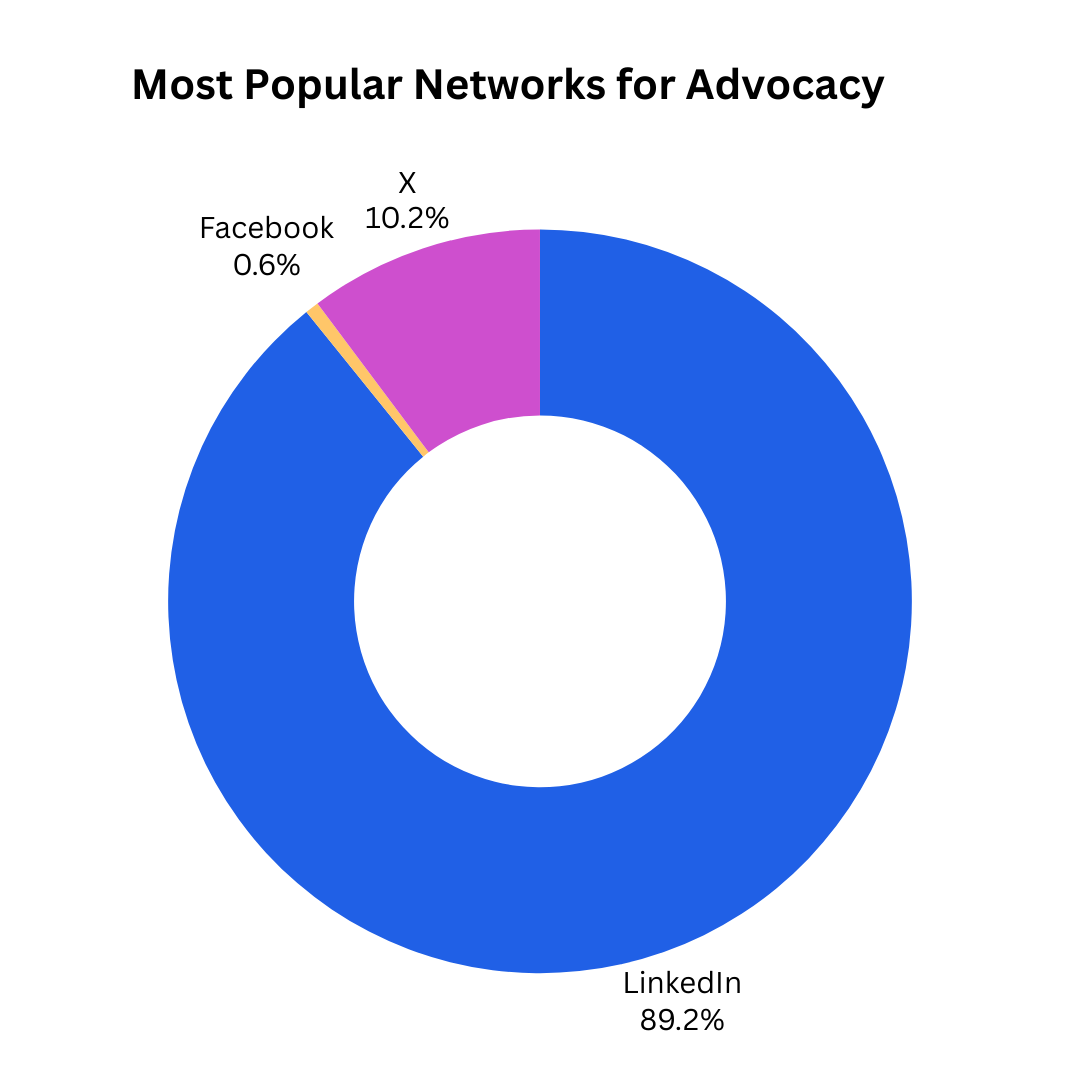
Why is LinkedIn so popular? The number one rule for advocacy is to always be where your audience is. And increasingly, people are seeing LinkedIn as the place to go for industry insights, connecting with like-minded individuals, networking, and honing their craft. Therefore, it is an ideal network to engage your audience in conversations, hand over knowledge, and position yourself as a thought leader.
Does LinkedIn’s popularity translate to Dollars?
According to our research, yes. LinkedIn accounted for more than 95% of all employee advocacy conversions.
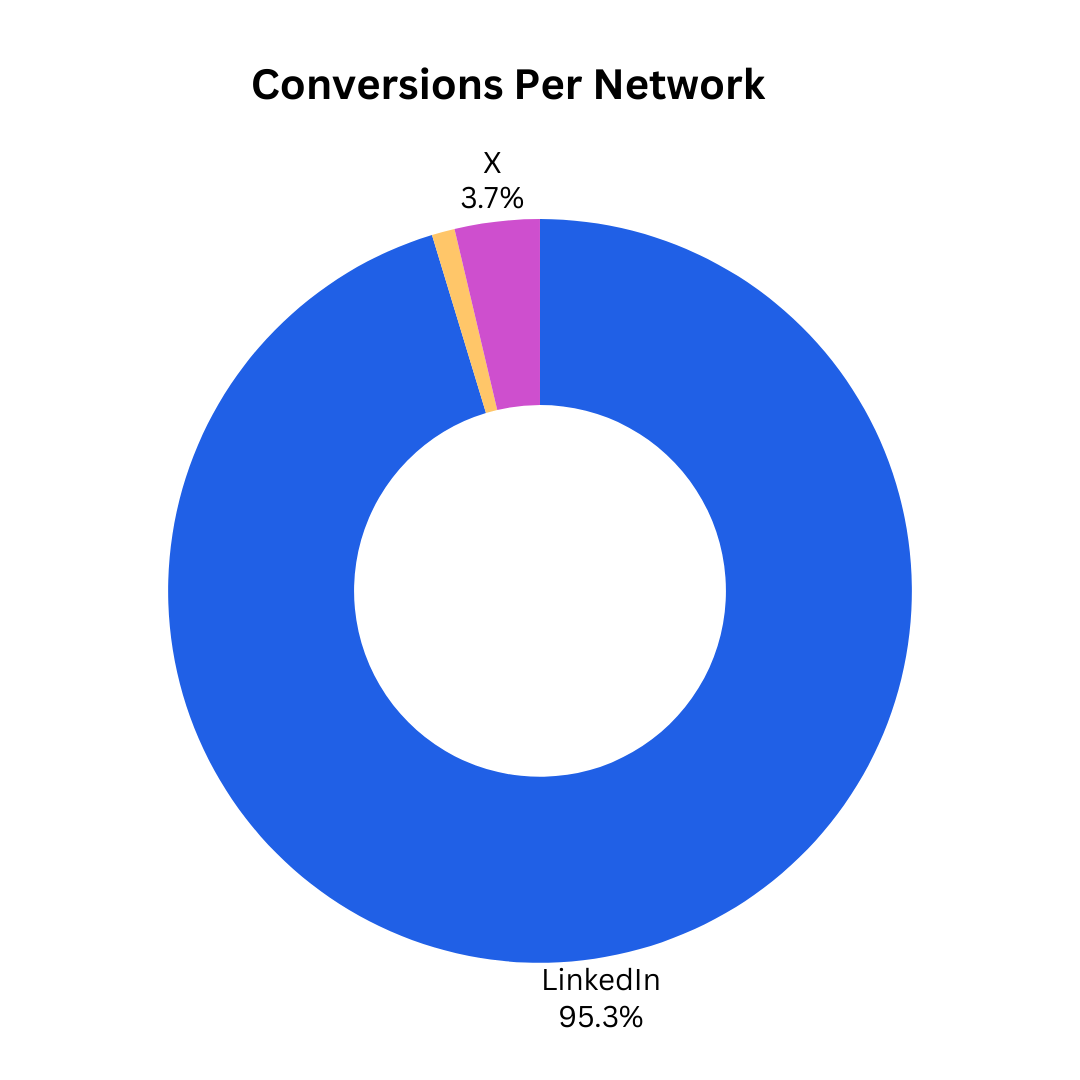
This does not mean you should ignore other networks, especially if your audience tends to flock to other social channels. However if you’re like most B2B organizations, it is likely that your most fruitful network will be LinkedIn. So make sure to invest in your LinkedIn strategy, gaining a deep understanding of your LinkedIn audience, so you can create the content they crave and see those conversions rise.
Oktopost pro-tip for mastering LinkedIn
Stay up to date on the latest LinkedIn algorithm changes so you can maximize the reach and impact of each post. In addition, make sure to regularly measure the content that resonates best on LinkedIn. Understand the types of content and topics that matter most to your audience through honing in on the number of likes, shares, comments, clicks, and conversions your content attracts and posting more content that fits the same criteria.
When are advocates posting content?
According to our data, Wednesdays and Fridays are the most popular days for advocacy posts, closely followed by Thursdays. Interestingly, Monday was the least popular day to post advocacy content across all industries.This could be because at the beginning of the week, advocates find themselves playing catch up on emails, projects, and activities they didn’t finish from the previous week. In fact, Saturday, despite being a weekend, saw more than double the posts as Monday.
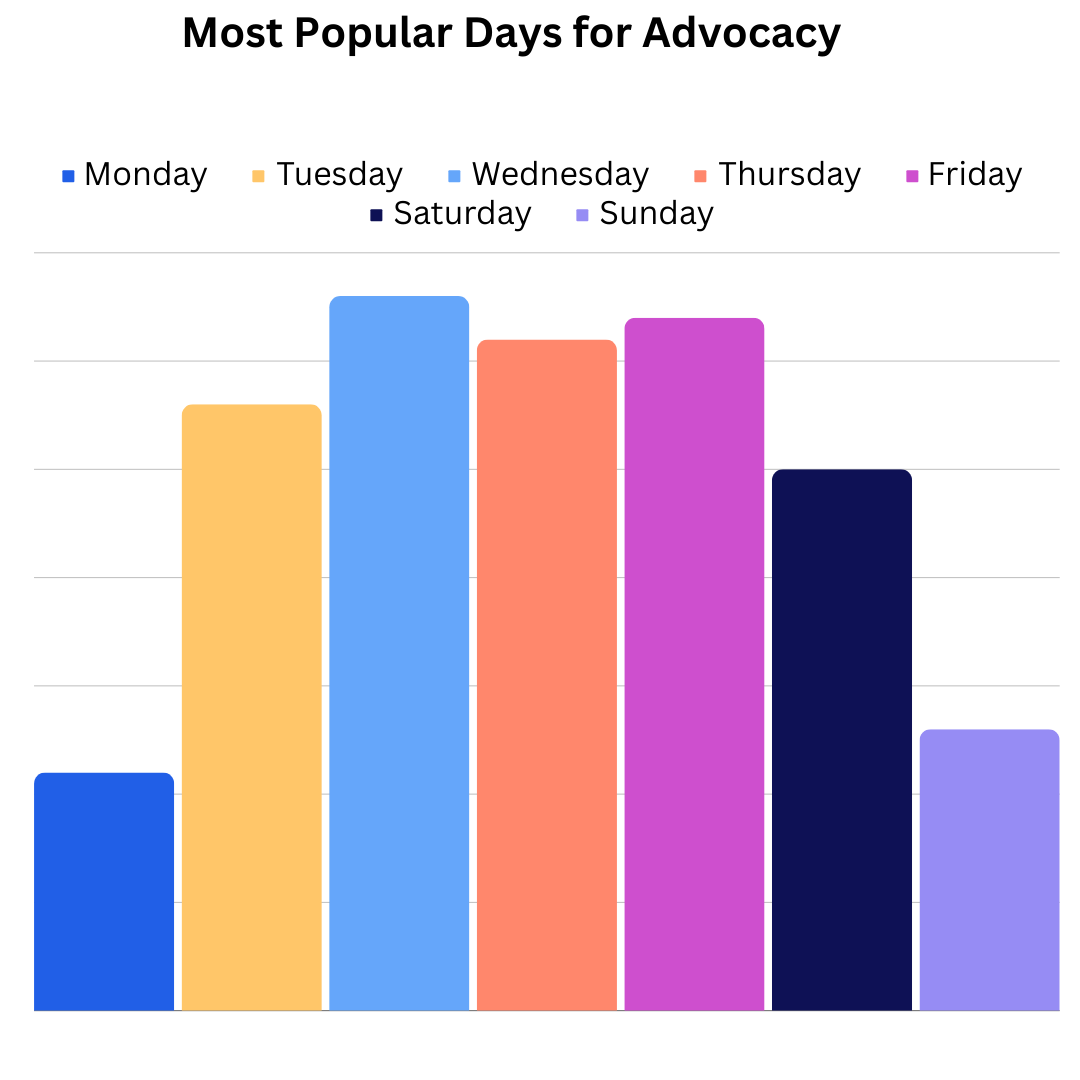
This suggests that perhaps there’s more room for spreading the word about the value of an employee advocacy program. The sporadic posting might mean that employees view it as an extra task, rather than something that’s naturally integrated into their responsibilities.
Does advocacy posting vary by industry?
Of course. Different B2B industries vary in terms of their workflow, target audience, and many other factors which impact advocacy posting. For example, both financial services and tech companies see the most advocacy posts on Thursdays, whereas accounting sees a jump in advocacy posts on Fridays.
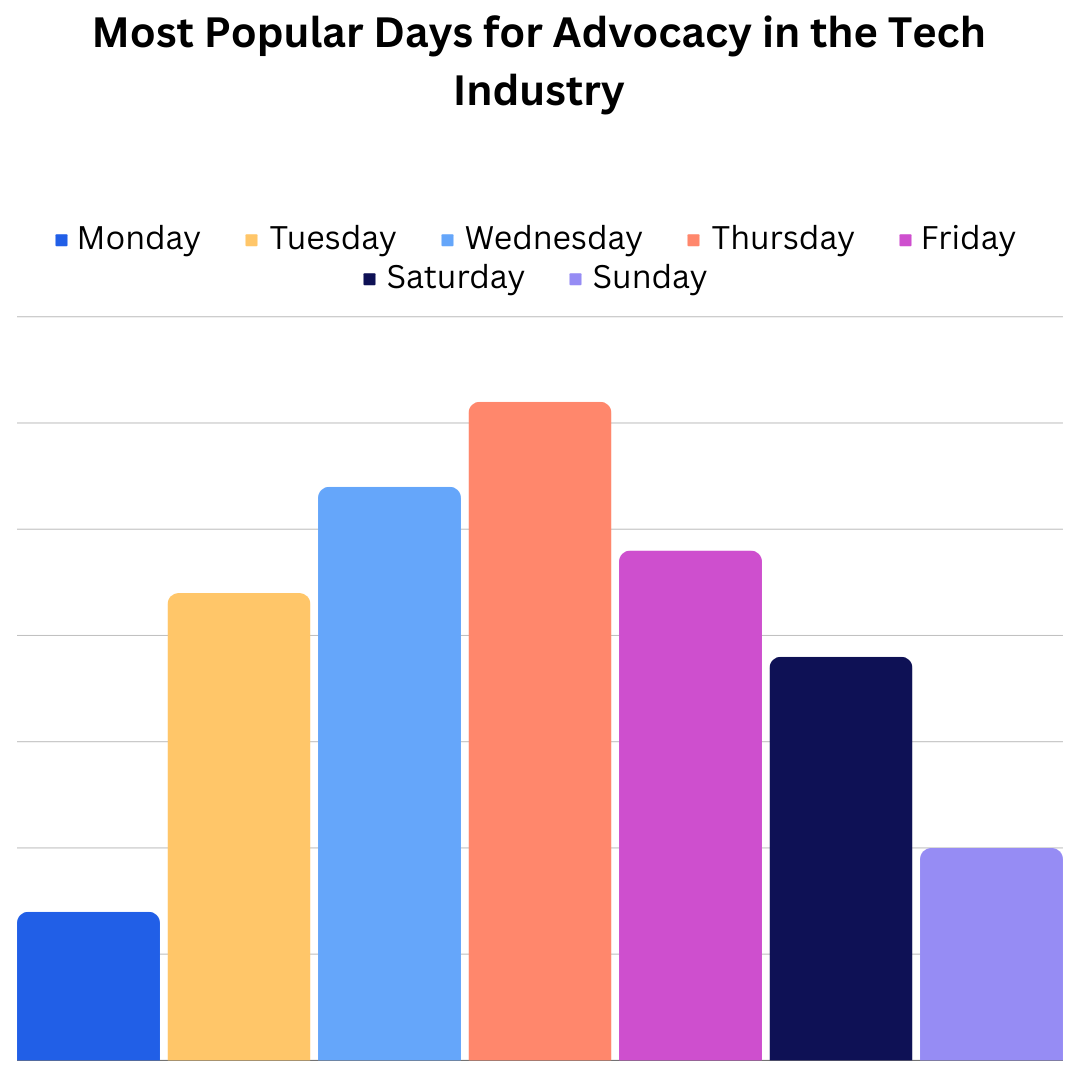
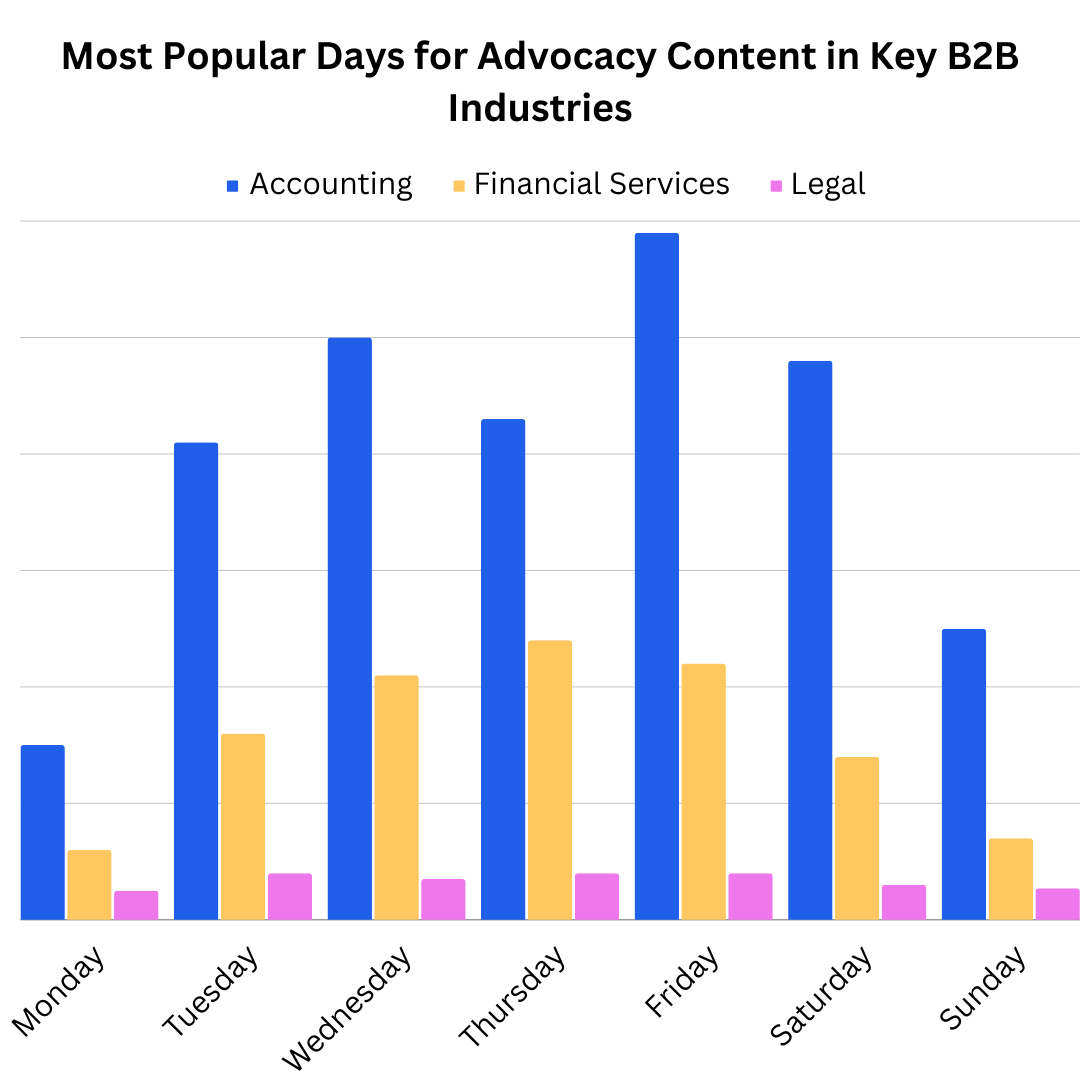
Why do some industries post more than others?
Our data indicates that certain industries engage in more posting than others. While pinpointing the exact reasons can be challenging, it’s possible that advocates in some industries feel overwhelmed with their workload and may not fully grasp the value of advocacy compared to others.
However, this is also an opportunity. Since busy employees are far less likely to spend time writing and posting their own content, an employee advocacy platform can help ease the pain of implementing an advocacy program by enabling employees to share pre-written content that can be easily edited and posted in just a few clicks.
Especially in fields like legal, financial services, and accounting, your team’s insights are gold when it comes to attracting clients. That’s why setting up an employee advocacy program is key—it encourages them to share their knowledge and build credibility both for themselves and for your organization. And with the right employee advocacy platform, your employees can access ready-to-share content, saving them the hassle of writing, editing, and worrying about compliance standards (since all content is pre-approved by your team).
Oktopost pro-tip for increased engagement in your employee advocacy program
Education and employee advocacy training can help bridge the knowledge gap and make your employees more eager to join your employee advocacy program. Highlight how employee advocacy can enable your team to build their personal brand, showcase their expertise, and even hit their sales targets with social selling. Bottom line–make sure it’s clear why it’ll benefit them.
Then, create a thorough training program that highlights the advantages of advocacy, teaches best practices, offers the right tools along with clear instructions on their usage, and provides incentives for ongoing participation. This can enhance advocate engagement and lead to a higher return on investment for your employee advocacy program.
Do Advocates Post Less During Particular Times of Year?
Not surprisingly, December and January saw the lowest number of advocacy posts in the year, which is likely due to the holiday season. June was the most popular month for posting advocacy content, closely followed by March.
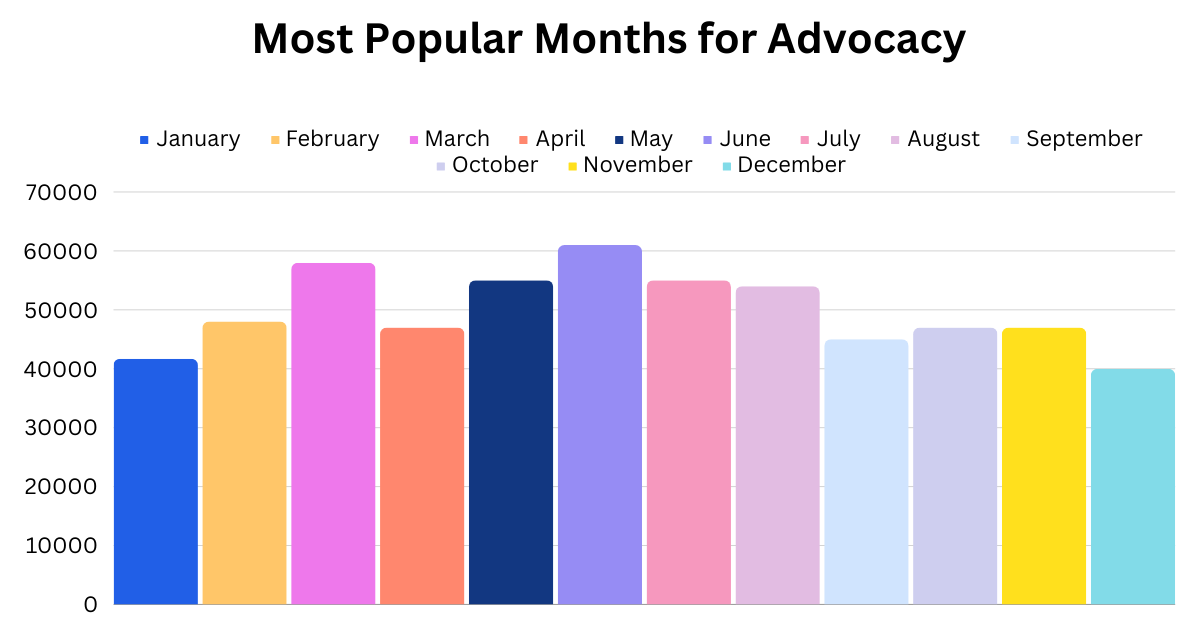
Oktopost pro-tip for motivating your employees during lulls
To make up for the lulls in advocacy that take place from September to January, consider implementing incentives or gamification to encourage advocates to post. A bit of friendly competition can go a long way in keeping your advocates engaged.
Recommended for further reading
Which content gets the most engagement?
The number one question most social media marketers who run employee advocacy programs ask is ‘what content should I post to maximize engagement’?
Based on our data, it’s clear that galleries were the most engaging content type for advocacy, closely followed by video. Surprisingly, links received the least amount of engagement overall. This highlights the trend favoring short, visual content over more traditional mediums like blogs, articles, and whitepapers, which often direct users to a brand’s website and might come across as promotional.
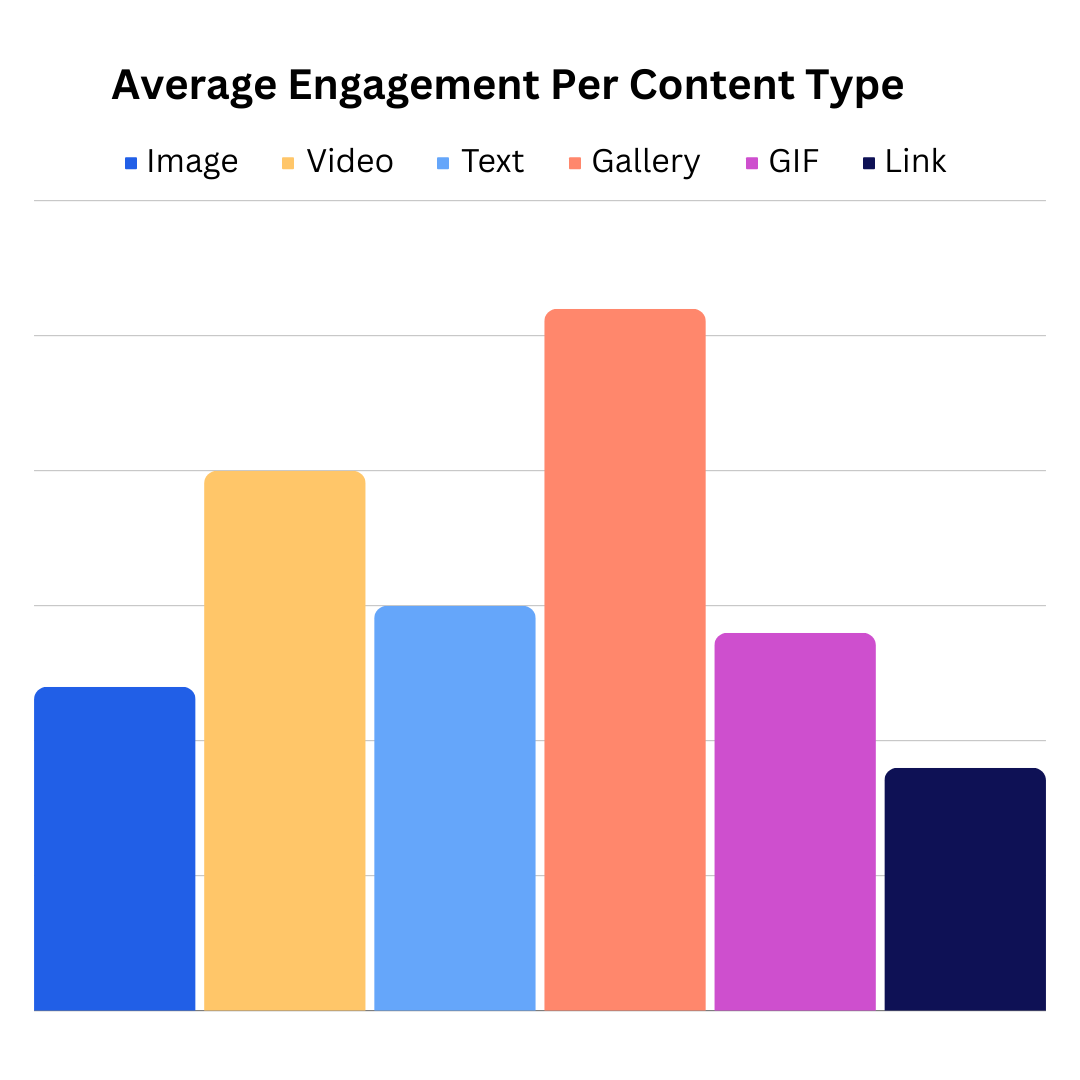
When we break this down further by the topics and sources of the content posted, we see this assumption confirmed. While blog posts, webinars, and product posts still see significant engagement, it is apparent that the content about best practices, culture, and industry trends tend to get the most engagement.
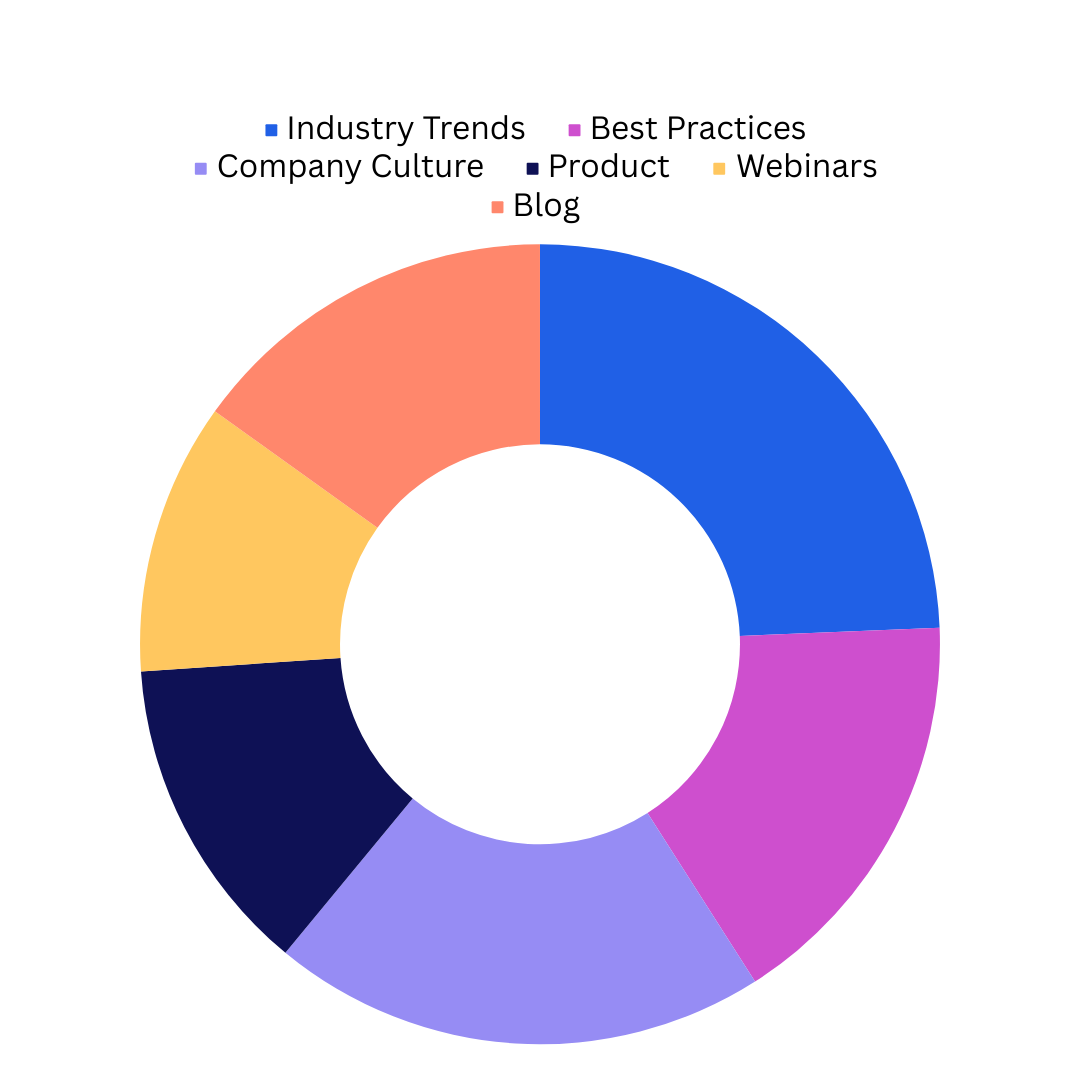
Oktopost pro-tip for advocacy content creation
Remember, advocacy is a long-term investment. This means it’s crucial to focus on producing content that helps your advocates build trust with their audience and establish themselves as thought leaders before guiding their followers to your website. This doesn’t imply that promotional content is off-limits. Instead, it suggests posting it sparingly, with thought leadership content taking precedence. Bottom line–make sure your advocacy content is more about your audience than your brand.
Follow the 6-3-1 rule. This means, for every ten pieces of content, six should be curated, three should be owned, and only one should be promotional.
Create a successful employee advocacy program in 2024
Now that 2024 is in full swing, it’s time to make sure your employee advocacy program emphasizes the right tactics so you can maximize its potential.
We’d invest in:
- Optimizing your LinkedIn strategy by sharing content that resonates with your LinkedIn audience- To fully leverage your investment in LinkedIn, get more hands on deck by incorporating executive thought leadership into your employee advocacy program to boost your brand’s credibility on the platform. Streamline this process by facilitating executive takeovers. This requires minimal effort from your executive team while maximizing impact.
- Make sure you implement ample training and incentives to motivate your advocates– This can include regular lunch and learns, training videos, and contests to keep your employees motivated to participate in your employee advocacy program.
- Post more content that is visual, educational, and provides value to your advocates’ audiences over branded content– This will position your advocates as respected industry thought leaders rather than people who are overtly pushing your company’s products and services.
Always remember that while these trends provide valuable insights, it’s essential to prioritize advocacy strategies tailored to your specific business needs. While data may indicate how other organizations enhance their employee advocacy program, it’s crucial to consider what aligns best with your advocates and their audiences by leveraging advocacy data that’s specific to your organization.
Learn how you can use Oktopost’s Employee Advocacy Platform to find out which content works best for your specific audience and accurately measure the effectiveness of your employee advocacy program.
